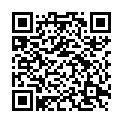Recommended or required reading:
- Aktories, K. & Forth, W. (2013). Allgemeine und spezielle Pharmakologie und Toxikologie. 11. überarb. Aufl. München: Elsevier.
- Aktürk, D. (2010). Checklisten Chirurgie. Krankheitslehre für Pflege- und medizinische Berufe. München: Elsevier.
- Andreae, S., Hayek, D. & Weniger, J. (2011). Gesundheits- und Krankheitslehre für die Altenpflege. 3. überarb. & erw. Aufl. Stuttgart & New York: Thieme.
- Ansorg, J. (Hrsg.)(2009). OP-Management. 2. erw. & akt. Aufl. Berlin: MWV.
- Asmussen, P.D. & Söllner, B. (2010). Die Prinzipien der Wundheilung. Embrach: Akademie-ZWM.
- Bauernfeind, G. & Strupeit, S. (2015). Dekubitusprophylaxe und -behandlung. Stuttgart: Kohlhammer.
- Bergen, P. (Hrsg.)(2010). Altenpflege heute. München: Elsevier.
- Bolanz, H. & Becker, P. (Hrsg.)(2008). Pflege in der Kardiologie, Kardiochirurgie. München & Jena: Elsevier.
- Brandenburg, H. & Huneke, M.J. (2006). Professionelle Pflege alter Menschen. Stuttgart: Kohlhammer.
- Bühring, U. & Sonn, A. (2013). Heilpflanzen in der Pflege. 2. überarb & erw. Aufl. Bern: Huber.
- Daumann, S. (2009). Wundmanagement und Wunddokumentation. 3. überarb. Aufl. Stuttgart: Kohlhammer.
- Deutsch, E. & Spickhoff, A. (2003). Medizinrecht. Arztrecht, Arzneimittelrecht, Medizinprodukterecht und Transfusionsrecht. 5. neu bearb. & erw. Aufl. Berlin & Heidelberg: Springer.
- Deutsches Netzwerk für Qualitätsentwicklung in der Pflege (2009). Expertenstandard Pflege von Menschen mit chronischen Wunden. Osnabrück: DNQP.
- Deutsches Netzwerk für Qualitätsentwicklung in der Pflege (2014). Expertenstandard Schmerzmanagement in der Pflege bei chronischen Schmerzen. Osnabrück: DNQP.
- Doenges, M., Moorhouse, M., Geissler-Murr, A. (2013). Pflegediagnosen und Maßnahmen, 4. vollst. überarb. und erw. Aufl. Bern, Göttingen u.a.: Huber.
- Eisoldt, S. (2014). Fallbuch Chirurgie. 4. überarb. Aufl. Stuttgart u.a.: Thieme.
- Fiersching, R., Synowitz, H.J. & Wolf, F. (2003). Professionelle neurologische und neurochirurgische Pflege. Bern & Göttingen: Huber.
- Gortner, L., Meyer, S., Sitzmann, F.C. (2012). Pädiatrie. 4. vollst. überarb. & erw. Aufl. Stuttgart: Thieme.
- Herdegen, T. & Böhm, R. (2008). Kurzlehrbuch Pharmakologie und Toxikologie. Stuttgart u.a.: Thieme.
- Hoehl, M. & Kullick, P. (2012). Gesundheits- und Kinderkrankenpflege. 4. überarb. Aufl. Stuttgart u.a.: Thieme.
- Höfert, R. & Schimmelpfennig, M. (2014). Hygiene, Pflege, Recht. Berlin & Heidelberg: Springer.
- Jelinek, A. (2013). Arzneimittellehre für Pflegeberufe. München: Elsevier.
- Kammerlander, G. (2004). Lokaltherapeutische Standards für chronische Hautwunden. Wien: Springer.
- Kamolz, L.-P. (2009). Verbrennungen. Diagnose, Therapie und Rehabilitation des thermischen Traumas. Wien & New York: Springer.
- Kamphausen, U. (2004). Klinikleitfaden Chirurgische Pflege. 2. vollst. überarb. Aufl. München: Urban & Fischer.
- Karavias, T. & Dinkelaker, F. (2001). Chirurgie & Pflege. 2. vollst. überarb. Aufl. Stuttgart & New York: Schattauer.
- Kirschnick, O. (2010). Pflegetechniken von A _ Z. 4. Aufl. Stuttgart: Thieme.
- Kretz, F.-J. & Reichenberger, S. (2007). Medikamentöse Therapie. Arzneimittellehre für Gesundheitsberufe. 6. überarb. Aufl. Stuttgart & New York: Thieme.
- Kuckeland, H. (2013). Umgang mit Angst in der prä- und postoperativen Pflege. Brake: Prodos.
- Lauber, A. & Eißing, E. (2012). Wahrnehmen und Beobachten. 3. überarb. Aufl. Stuttgart & New York: Thieme.
- Lobinger, W., Haas, J. & Groß, H.A. (2013). Qualitätsmanagement in der Pflege. 2 Aufl. München: Hanser.
- Nagel, M. (Hrsg)(2009). Organtransplantation und Internationales Privatrecht. Berlin & Heidelberg: Springer.
- Naylor, W., Laverty, D. & Mallet, J. (2001). Handbook of Wound Management in Cancer Care. London: Blackwell Science.
- Oelke, U. & Borgers, A. (Hrsg.)(2011). Gesundheits- und Krankenpflege, Gesundheits- und Kinderkrankenpflege. Band 1. Berlin: Cornelsen.
- Paetz, B. & Hoffart, H.-E. (2013). Chirurgie für Pflegeberufe. Stuttgart & New York: Thieme.
- Panfil, E.-M. & Adamczyk, A. (Hrsg.)(2015). Pflege von Menschen mit chronischen Wunden. 3. korr. & erg. Aufl. Bern: Huber.
- Porjalali, S. (2011). Lernkarten Anatomie und Physiologie. 3. Aufl. München: Elsevier.
- Probst, W. & Vasel-Biergans, A. (2010). Wundmanagement. 2. völlig neu bearb. & erw. Aufl. Stuttgart: WVG.
- Protz, K. (2014). Moderne Wundversorgung. 7. Aufl. München: Elsevier.
- Ruß, A. & Endres, S. (2013). Arzneimittel pocket plus 2014. 10. Aufl. Grünwald: Börm Bruckmeier.
- Selmer, W., Bültemann, A. & Tigges, W. (2010). Wunden versorgen, behandeln, heilen. 2. akt. & erw. Aufl. Berlin u.a.: MWV.
- Strack, R. (2013). Grundwortschatz für Pflegeberufe. 10. akt. Aufl. Stuttgart: Kohlhammer.
- Strehl, E. (2014). Arzneimittel in der Pflege. 8. überarb. Aufl. Eschborn: Govi.
- Vasel-Biergans, A. & Probst, W. (2010). Wundauflagen. 3. überarb & erw. Aufl. Stuttgart: WVG.
- Wiederhold, D. (2013). Pflegealphabet. Von Absaugen bis Zystitisporphylaxe. 3. Aufl. München: Urban & Fischer.
- Wigger, D. & Stange, M. (2013). Medikamente in der Pädiatrie. 4 überarb. & akt. Aufl. München: Elsevier.
- Wild, T. & Auböck, J. (2007). Manual der Wundheilung. Wien & New York: Springer.
- zur Mühlen, Meike von & Fischle, G. (2013). Chirurgie, Orthopädie, Urologie. 4. Aufl. München: Elsevier.
Scientific / Trade journals:
- Die Schwester Der Pfleger. Verlag: Bibliomed.
- International Journal of Nursing Knowledge. Verlag: NANDA International.
- JuKip Ihr Fachmagazin für Gesundheits- und Kinderkrankenpflege. Verlag: Thieme.
- Pflege. Die wissenschaftliche Zeitschrift für Pflegeberufe. Verlag: Hans Huber.
- Pflegezeitschrift. Verlag: W. Kohlhammer.
- OP-Journal. Verlag: Thieme
- Langbeck┤s Archives of Surgery. Verlag: Springer.
- Deutsche Zeitschrift für Chirurgie. Verlag: Springer.
[updated 01.10.2020]
|


